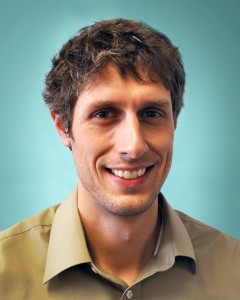
On April 10, Daniel Dedrick participated in the California Energy Commission’s (CEC) 10th Integrated Energy Policy Report Workshop, “The State of Alternative Transportation Technologies Over the Next 10 Years.” Daniel was a member of the Hydrogen Fueling Systems Panel, along with Aaron Harris of Air Liquide; Matt McClory of Toyota; and Brendan Shaffer of the University of California, Irvine. Other panels discussed electric charging infrastructure, Zero Emission Vehicles (ZEV) and Near-ZEV trucks, and biofuels.
Daniel spoke to the opportunities to reduce the cost of hydrogen refueling station hardware and systems, which he said is influenced by three main factors: level of experience, economies of scale, and the cost of compression, storage and delivery technologies. He discussed Sandia and the National Renewable Energy Laboratory (NREL)’s partnership to accelerate hydrogen refueling station technology. This DOE supported effort supports H2USA, the national public private partnership focused on accelerating the deployment of hydrogen fueling stations and consisting of more than 30 organizations including the auto companies, station providers, government agencies, and associated stakeholders.
“To be most impactful with our collaborative efforts, we are forming partnerships with leading private sector organizations and forming project teams associated with addressing the biggest opportunities for cost reduction and improving customer experience,” said Daniel. “Using input from our partners, the Sandia and NREL team developed a 10-year roadmap that identifies technical areas that need to be addressed to reduce station cost and enhance the customer experience.”
The 10-year roadmap identifies a number of near term high-impact opportunities, including reducing station footprint, enhancing the reliability of components, developing and implementing methods for evaluating hydrogen dispenser performance, and eliminating unnecessary high-value materials and components from the station systems. Speaking to the last point, Daniel shared an example of 316L, a stainless steel alloy commonly used in hydrogen systems. This alloy has several disadvantages for use in hydrogen systems, including high cost and characteristically low strength, but is still used because there is not enough data and experience with alternative materials. “This is a perfect example of how we in the research community can work directly with the private sector to develop new low-cost, high-performance,” he said.
In conclusion, Daniel told the CEC: “There is an opportunity for the state, federal, and private sector stakeholders to work together and overcome these challenges, paving the way for improved air quality and a healthy economy. I am confident that we can be successful in these efforts because stakeholders are engaged in the government and private sector as evidenced by this workshop and similar events happening at the regional and national level.”